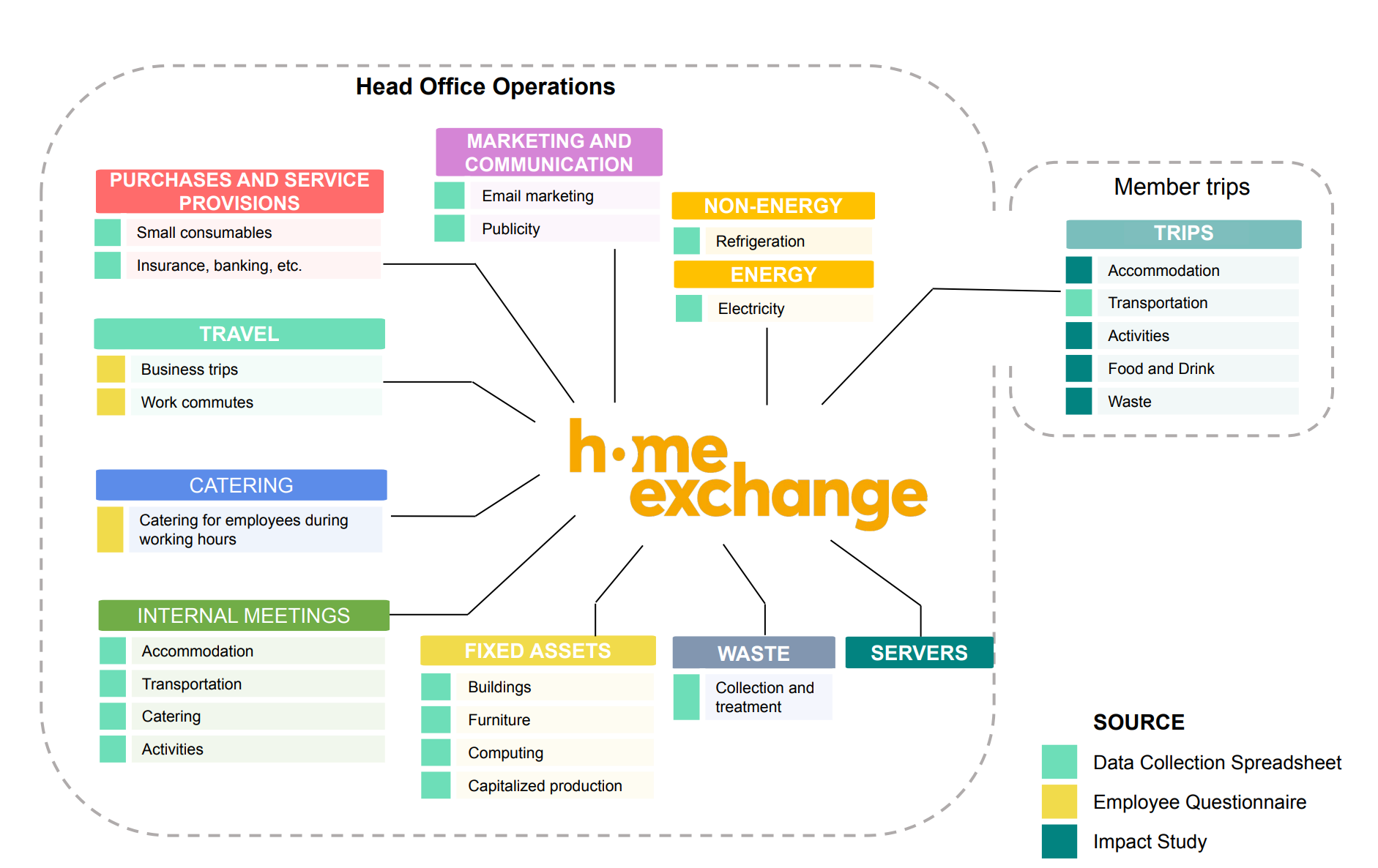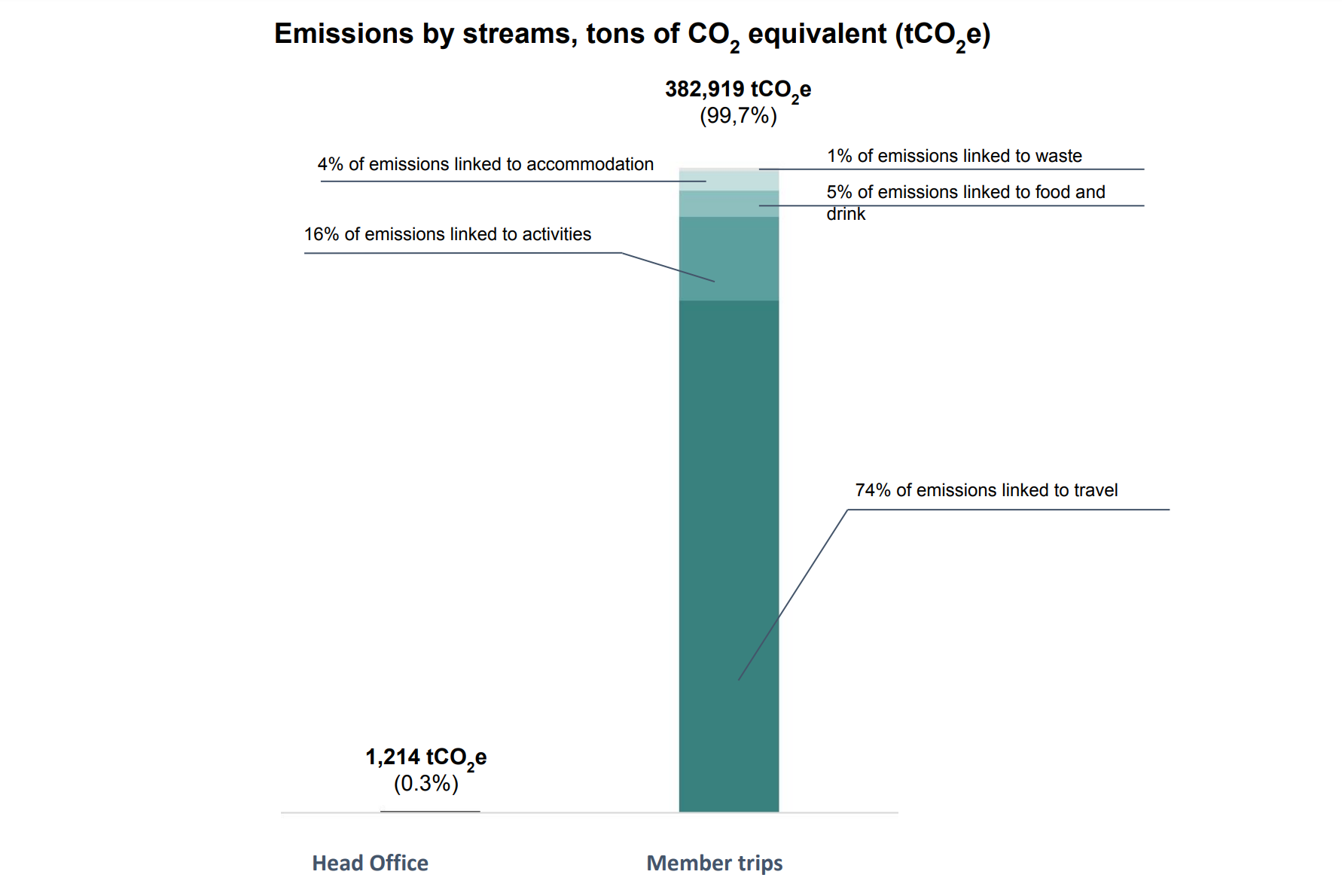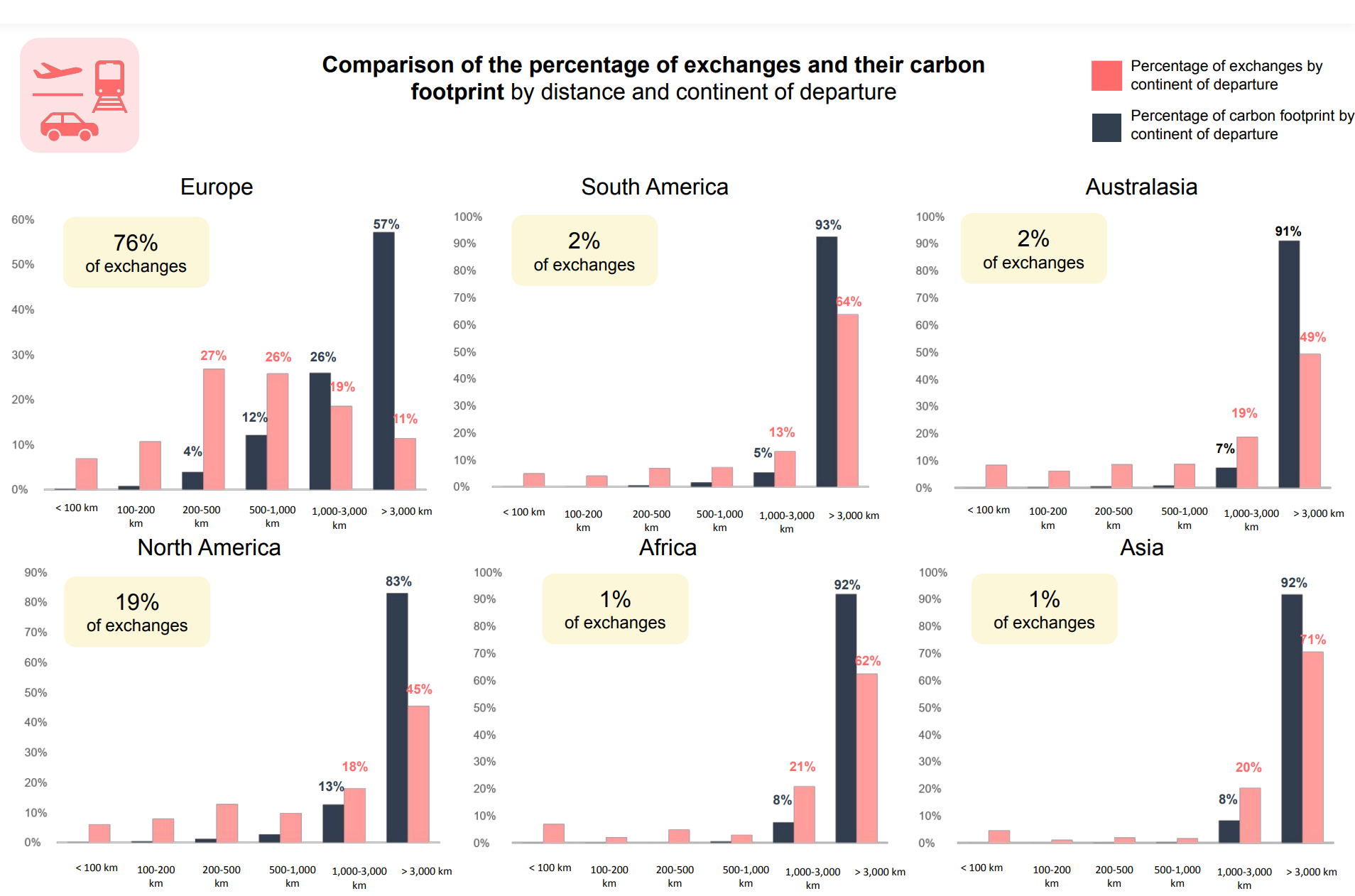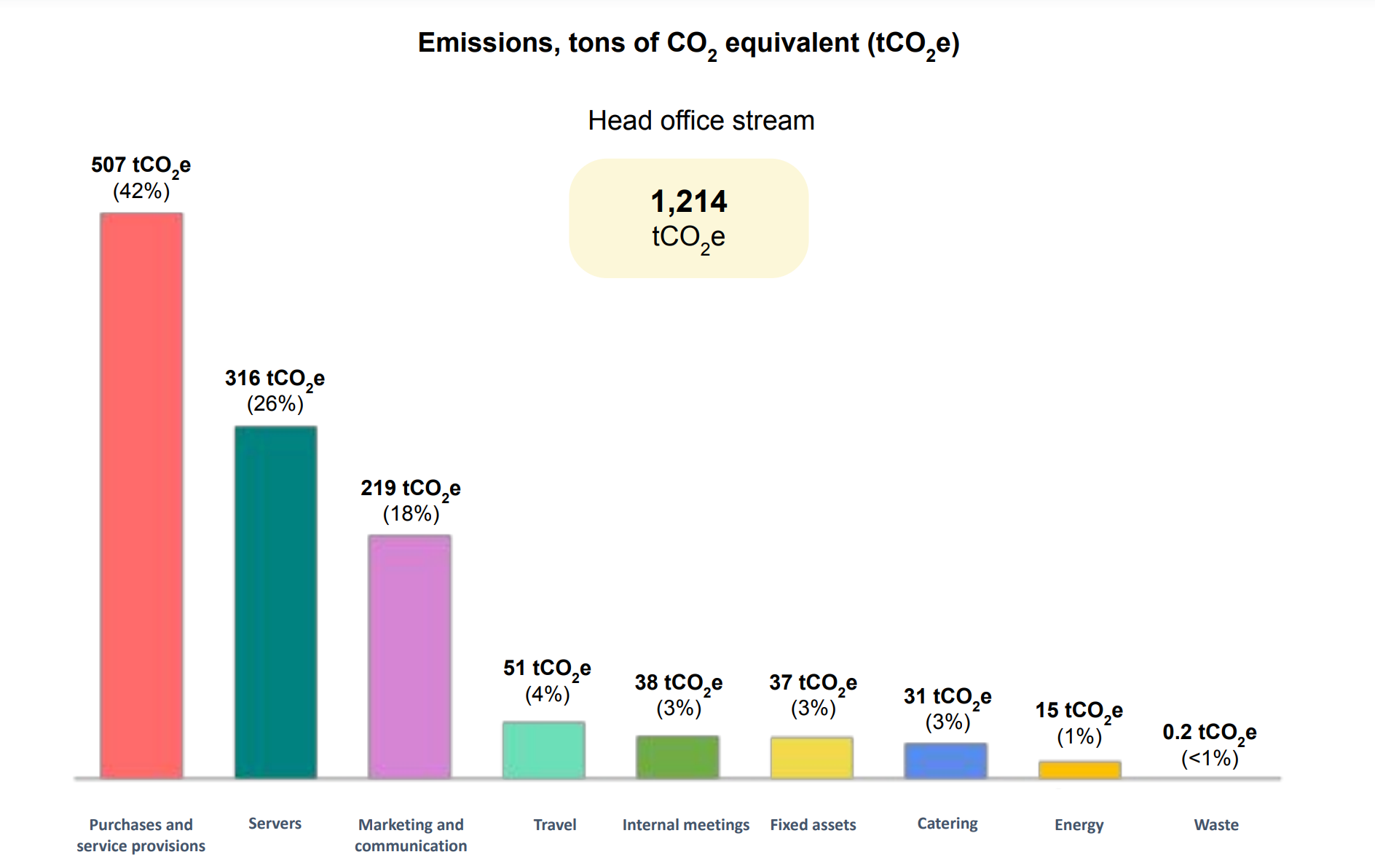Why measure our carbon footprint?
At HomeExchange, we have been voluntarily measuring our carbon footprint since 2019. After noting the emissions that came from our head office operations and our services, in 2020 we made the decision to start measuring the emissions from the transport used by our members to get to their home exchanges.
Far from being an end in itself or an exact science, measuring our carbon footprint is an essential exercise to better understand the scale of impact. It allows us to be transparent with our community and, above all, it serves to feed an action plan aimed at improving our impact.
2022: a new reference year for our carbon footprint
Switching from an external tool to a tool customized for us
Although we chose to use external tools for our first three audits, we wanted to gain greater precision in measuring our various emissions streams. Therefore, we turned to OuiAct, a firm renowned for its expertise in climate strategy. After assisting us in carrying out a carbon impact study, they helped us to build a measurement tool that was better adapted to our specific needs, based on the Bilan Carbone® method. OuiAct has therefore carried out the entire 2022 carbon footprint, and we will be able to measure it ourselves in subsequent years, while having the results validated and certified by the OuiAct team.
Limitations to bear in mind
- As in previous years, the carbon footprint must be examined with a considerable degree of caution and perspective, as it provides only a partial estimate. We have given priority to physical data over monetary ratios (X€ = X tCO2e (=tonnes of carbon dioxide equivalent)), but there is still a degree of uncertainty.
- Comparisons with previous years are difficult to make: in the context of Covid, 2020 and 2021 were very unique years for the tourism sector.
- This is also the first year that we have measured our members' transport emissions with such precision, thanks to a new, more granular statistical methodology.
Key results and findings of our 2022 carbon footprint report
Results by emission stream
Between January 2022 and December 2022 inclusive, HomeExchange and our community produced 384,134 tCO2e across all streams, including head office operations and member travel (head office operations and member travel). More concretely, this corresponds to 55,000 Paris-Sydney round trips (Source : Bon Pote).
Here is a map of the emission streams taken into account in our carbon footprint:

Here are our results by stream:

Our head office’s carbon footprint per employee is 13.5 tCO2e, 1.5% down from 2021. The carbon footprint of travel is not comparable with 2021, mainly due to the change in scope (all travelers are now included in the calculation).
Good or bad results? Given the change in methodology, the limitations of the exercise, the fact that few organizations in the tourism industry share their carbon footprint, plus transport decisions being made by customers when traveling to their destination, it's difficult for us to draw any conclusions about our 2022 results.
But that doesn't mean we can't learn from it 💡
The crushing load of long-haul travel
As you can imagine, the travel of our community accounts for almost all of our carbon footprint. Among the key findings: journeys of over 3,000 km, which account for almost 70% of our members' travel-related emissions, comprise just 20% of home exchanges carried out through our platform.

Head office emissions: a major stream resulting from purchasing and services, for which we have few opportunities for improvement
Here are the details of the emissions from the operation of our head office:

Our main source of emissions in this area? Purchases and service provisions.
The majority of these emissions come from service provisions, and have been processed using monetary ratios. As a result, uncertainties on the associated emissions are relatively high (around 80%) and the levers for reduction are diminished. We could think about changing banks but, as the monetary ratios provided by ADEME remain the same, the impact would not be noticeable in our 2023 assessment.
Advertising carbon footprint: improved measurements, but some gray areas still exist
- In previous years, the digital figure accounted for the bulk of our carbon footprint; today, it's the third largest source of emissions. Thanks to OuiAct, we have been able to go beyond the monetary ratios for our digital advertising expenditure, or the age-old estimate of 4g CO2e per email (which is not very realistic in the case of bulk emailing).
- Another noteworthy point: we have adapted our advertising strategy and reduced our investments compared to 2021, resulting in a lower associated impact.
- On the other hand, the carbon footprint linked to our AWS server has exploded (+358% from 2021), as this year we have taken into account the raw data communicated by Amazon Web Services, rather than just a monetary ratio.In contrast to digital, studies on carbon emissions associated with TV advertising are not very well developed today. In fact, they are almost non-existent. In the absence of precise data, we have used monetary ratios for this item. One notable area for improvement is to shoot our future commercials in less remote locations. We shot a commercial in Colombia in 2022 and, while we tried to limit this impact by sending the smallest possible crew, this item represents a substantial part of the Marketing footprint.
Next steps 🚀
Promoting sustainable tourism: the main pillar of our low-carbon strategy
Unsurprisingly, our community's travel-related emissions account for 99.7% of our carbon footprint. Far from passing the buck to our members, we recognize our role as a provider of low-cost travel solutions, and as someone who has regularly highlighted some of the world's most remote destinations. We take our share of the blame.
This more in-depth assessment will therefore enable us to consolidate our 2023/24 emissions-limitation strategy, with a particular focus on promoting closer, low-carbon tourism.
Even though the load of emissions linked to our members' travel greatly surpasses that of our head office, we are convinced that by putting impact at the heart of all our activities, we will succeed in transforming ourselves from the ground up. We will therefore continue to implement actions to improve our head office footprint (such as use of sustainable transportation, limiting air travel, auditing our suppliers, conducting awareness-raising actions etc.).
Rethinking our carbon donation strategy
After a year that was marked by the controversy surrounding carbon credits, we have decided, for the time being, to focus our investments on French projects, and not necessarily to restrict ourselves to reforestation projects. We also choose to support projects aimed at preserving existing forests, for example, which help to keep carbon sinks intact as well as to protect the biodiversity they shelter.
As donating is not an end in itself, our priority remains the consolidation and implementation of an emissions-reduction action plan.
In conclusion
We don't want to wait until we're legally obliged to do so before understanding our impact and implementing an ambitious action plan. While there is still room for improvement in our footprint assessment, this year we have taken a further step towards greater precision and transparency. Our priority now is to define precise and realistic objectives, plus the strategy that will enable us to achieve them.
One thing that is certain, is that reducing our carbon emissions is not a battle we can fight alone. Changing the way travel is represented is not something that can be achieved overnight but, by combining our strengths and efforts, we can make a real difference!
So, are you ready to join us on a journey towards more sustainable tourism?
